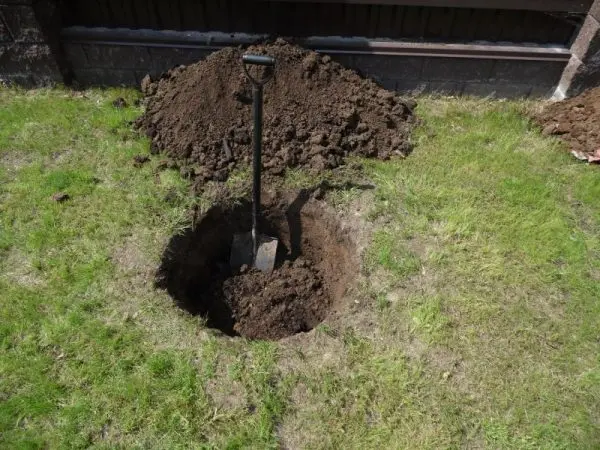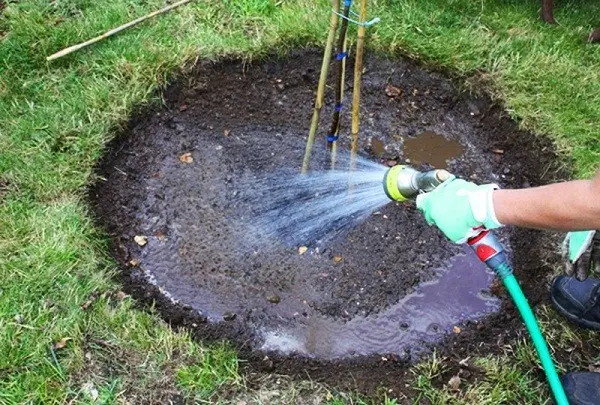Contents
Cherry Astakhov belongs to the northern varieties. The purpose of the selection was to create sweet cherries that are resistant to harsh climates. The gardeners succeeded to the full extent: the combination of sweetness characteristic of the varieties of the south, high immunity to diseases and resistance to cold make the Lyubimitsa Astakhova variety the best choice for the central territories of the country.
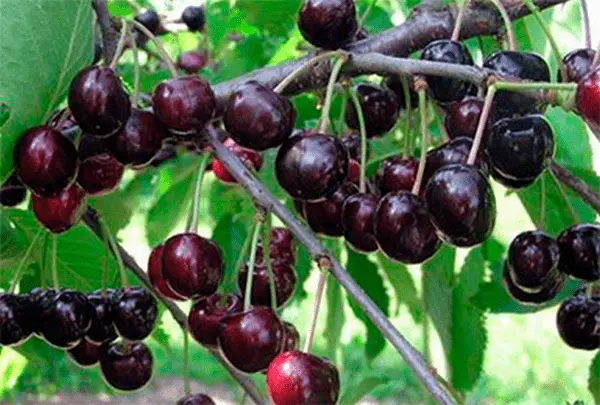
History of variety breeding
Breeder M. V. Kanshina is the creator of sweet cherries, Lyubimitsa Astakhova, gave her the name in honor of her husband A. I. Astakhov. The bred variety belongs to the northern group: resistant to winters, highly productive. The final work was carried out in the 70s under the guidance of prof. A. N. Veniaminova in Bryansk. The Lyubimitsa Astakhova variety was created on the material of selected samples of hybrids, and its genotype was formed under the influence of Voronezh and Leningrad selections. In the State Register since 2011.
Description of the cherry variety Lyubimitsa Astakhova
The main indicators of Lyubimitsa Astakhov are presented in the table:
Regions | |
Regions for sweet cherry Astakhov | Central, but also feels great in the Non-Black Earth Region, in the Southern Urals. |
Tree | |
Trunk | Average intensity of growth; Height 3,5 – 4 m. |
Bark | Intense gray, closer to dark, with slight peeling; after shedding leaves – very silvery. |
Leaves | Matte, green; medium, long, elliptical, pointed with jagged edges. |
Flowers, fruits | Bouquet branches; three saucer-shaped flowers in the inflorescence and a calyx in the form of a glass. |
Crown | Spreading, medium density, round-oval. |
Shoots | Below are located horizontally, naked, brown-gray. Closer to the top are inclined and brown. |
Formation | Trimming, create tiers |
Fruit | |
Size | Average |
Form | Oval |
The weight | 4–5 g, up to a maximum of 8 g. |
Skin | Dark red, in ripe fruits closer to black-burgundy, smooth, with a sheen, subcutaneous points are absent. |
pulp, juice | Painted brightly; the pulp has elasticity, fleshy, saturated with juice, with an easily separated stone. |
Taste | Sweet, like the best varieties in the south, tasters score from 4,5 to 4,8 out of 5. |
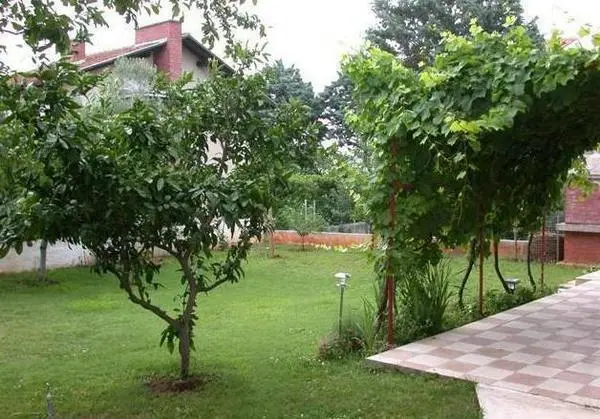
Characteristics of a variety
The description of the variety includes several points of characteristics, all of them together make up the advantages and disadvantages of Astakhov’s sweet cherry.
Winter hardiness of sweet cherry Lyubimitsa Astakhova
Resistance to frost and cold increased. Variety Lyubimitsa Astakhova was specially created in a harsh climate. Nevertheless, for better yields, it is desirable to plant it in places with protection from the wind, it is recommended to create protective fences on the north and south sides.
Cherry pollinators Lyubimitsa Astakhova
The variety is partially self-pollinating, so the presence of pollinating trees near is mandatory, since there are very few ovaries without them. In extreme cases, cherries that bloom at the same time as Astakhov’s Favorite will be suitable as pollinators.
Terms of flowering and fruiting of pollinators for sweet cherries Lyubimitsa Astakhova:
Grade | Flowering / fruiting |
Baby | From 10 May / mid-July |
Tyutchevka | End of May / End of July |
Ипуть | End of March / beginning of summer |
Red hill | Early May / mid June |
Ovstuzhenka | Second decade of May / mid-summer |
Radica | End of March / beginning of summer |
Large-fruited | End of May / end of summer |
Revna | Mid May / July |
Yield and fruiting
The flowering time of Astakhov’s Favorite is May. Fruiting begins in the 5th year. The ripening period is medium-late (beginning – mid-July).

Scope of berries
The use of Astakhov’s Favorite berries is universal. Safety during transportation is good, as the fruits are dense. The best harvest time is early in the morning, as at this time the pulp has a good density.
Under normal conditions, the berries do not keep for a long time (2-3 days). Stored in the refrigerator.
Suitable for all uses: fresh, freezing, drying, jam, twists, compotes, pastries, juices, fruit salads.
Disease and pest resistance
Diseases of Darling Astakhov:
Disease | Immunity |
Kokkomikoz | Average |
Moniliasis | Tall |
Klyasterosporiosis | Tall |
cherry fly | Affects fruits, medium persistence. |
Despite the high degree of resistance to fruit ailments, gardeners recommend that preventive measures be taken when growing Astakhov cherries.
Advantages and disadvantages of the variety
Pros and cons of Astakhov’s Favorite:
Advantages | Disadvantages |
Resistant to cold, frost. Resistant to frosty wind, but within reasonable limits. | Pollinator selection. |
Sweet taste of southern varieties (4,5 – 4,8 out of 5 on a tasting scale). | Vulnerability to frost in spring, especially in young seedlings. They are recommended to wrap. |
High yield. | |
Excellent immunity. | |
Unpretentiousness. |
Features of landing
When planting Astakhov cherries, the following parameters are taken into account:
- deadlines;
- priming;
- watering;
- place of growth;
- distance from other plants and proximity to them.
Recommended dates
Astakhov cherries are planted in late spring, after thawing, but before bud break, after the possibility of late frosts is minimized, and the soil is well saturated with moisture. Autumn planting carries the threat of freezing of fragile roots.
Choosing the right place
For Astakhov’s sweet cherry, you need to choose the warmest place on the site, open to light, protected from the winds of the northern direction by a wall, fence, and other plantations. On the slope, the south side is the most favorable.
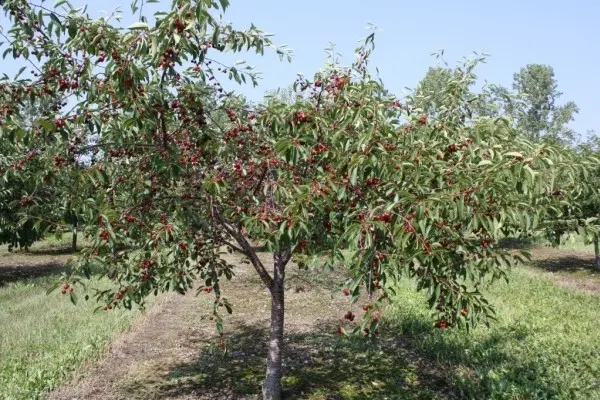
Soil requirements: non-acidic, fertile and at the same time well breathable (loose). Clay and sandy lands for sweet cherries are undesirable.
What crops can and cannot be planted nearby
- Sweet cherry Astakhov’s favorite is not favorable to the neighborhood with pepper, tomatoes, eggplant, tobacco (nightshade). They are prone to verticillium wilt, which can kill cherries as well.
- Astakhov’s cherry feels great next to the small periwinkle, violets, lily of the valley and other flowers that love light sandy loamy soils.
- Apple, pear, apricot, peach, currant, raspberry, gooseberry, hazel are not recommended to be planted nearby.
- But black elderberry (additional protection against aphids) and columnar cherry plum, on the contrary, have a good effect on cherries.
Selection and preparation of planting material
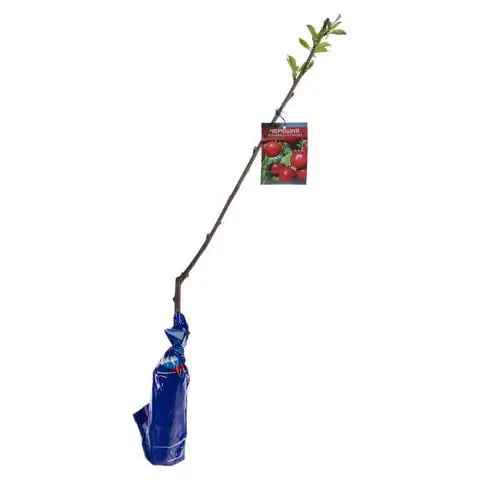
Requirements for Astakhov cherry seedlings:
- no more than 3 years;
- no damage to the root and bark;
- there should be no spots and cracks that are not characteristic of the plant;
- on the root should be from 3 branches with a thickness of 2 mm.
Preparation:
- Cut off damaged root segments.
- The root is soaked if it is excessively dry.
- Remove all leaves, as they take moisture.
Landing algorithm
Step-by-step actions for planting sweet cherries Favorite Astakhova:
- They dig a hole, fill it with humus, ash, fertilized soil mixture (half of the nutrient soil). Depth – 40-50 cm, diameter – 80 cm.

- They make a mound at the bottom, install a tree, the roots are conveniently laid out. Then, raising it by 5 cm, the fertilized soil mixture is carefully poured.
- The neck of the root – on the south side, looks out 3-4 cm above ground level, so that the grafting site warms up well.
- An excessively sluggish crown is incised to living tissue, but not more than a third.
- The trunk is tied to a peg until the tree grows.

- pour 2 buckets of water, immediately mulch.
Aftercare for cherries
Watering | 1 time per week in the near-stem hole, for an adult tree – in the furrow, during the ripening of the crop: 3-4 buckets per week (during drought). |
Additional fertilizing | The next year after planting. Fertilizers: in spring – nitrogenous; flowering and a little later – potash; autumn – fluorine-containing. When it begins to bear fruit, do it regularly. |
Trimming | Poorly tolerated, it is minimized. Remove vigorous, dried and damaged branches, sprouts at the roots. After the appearance of berries on the shoots, they are shortened by a third – this stimulates the appearance of productive buds. In the northern regions, it is undesirable to carry out these manipulations annually. |
Preparation for winter | The soil is mulched. Seedlings up to 3–4 years old are wrapped with spruce branches, roofing material, lutrasil. |
Reproduction | Inoculation. The best rootstocks are undersized, winter-hardy and adapted to the terrain. |
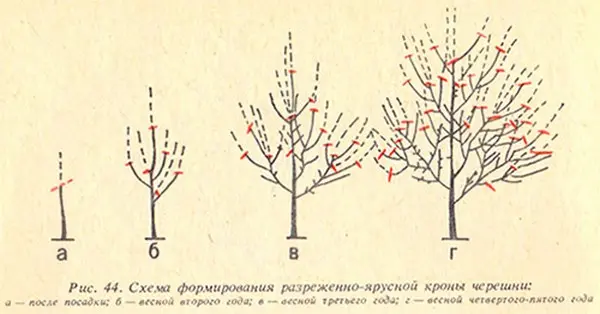
Diseases and pests, methods of control and prevention
Before the buds swell, spray with Bordeaux liquid or copper sulphate. This is repeated during the flowering period. Recommended treatment with preparations “Zircon”, “Ekoberin”.
The cherry fly is the most dangerous pest. To prevent its occurrence, fallen berries must be picked up regularly; during flowering, the crown is treated with insecticides.
Conclusion
Astakhov’s cherry is definitely recommended by gardeners: it does not lose any of the valuable qualities inherent in cherries. Winter-hardy, resistant to pests. The berries have a rich sweet aromatic taste of southern varieties, and at the same time they are large, with juicy, moderately dense pulp. Separately, one should take into account the excellent transportability, which is important for business.










